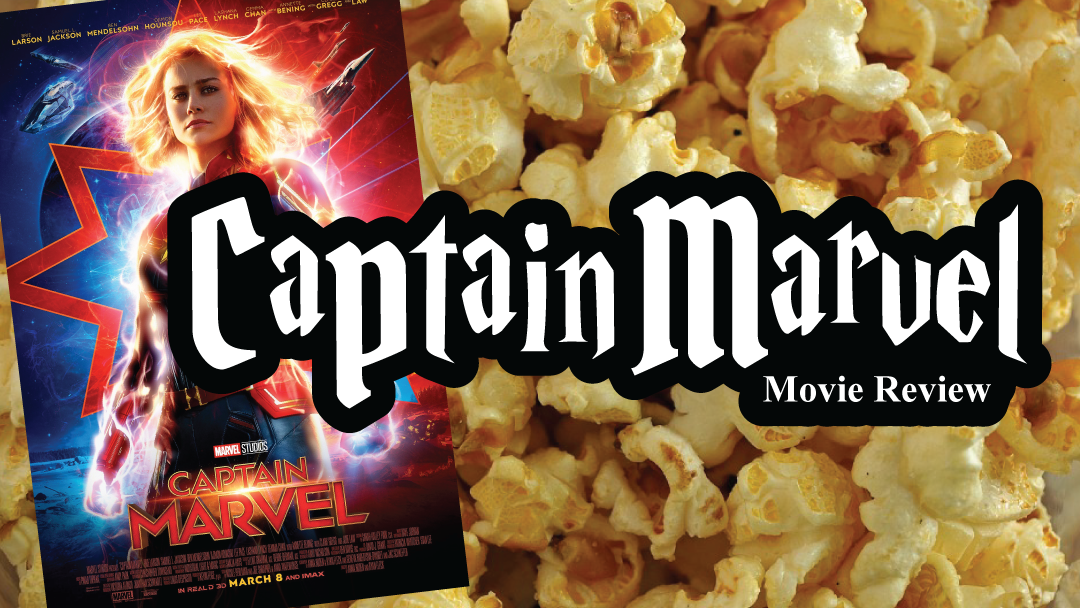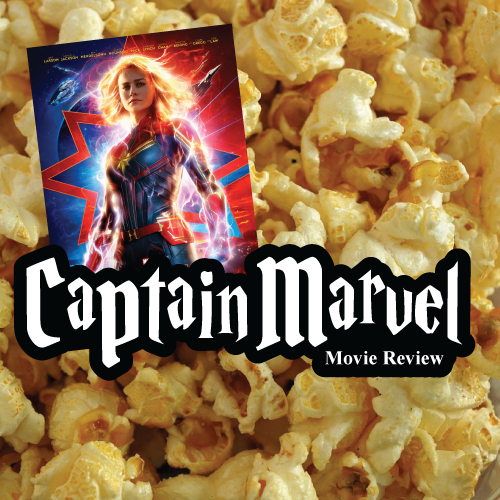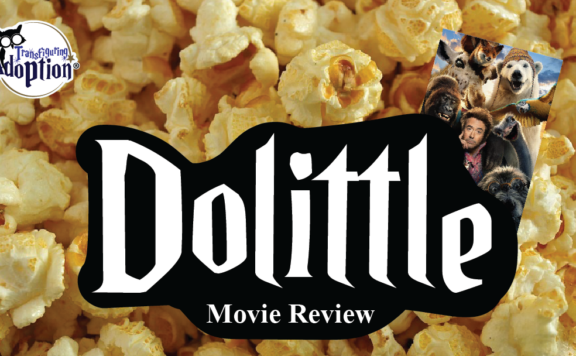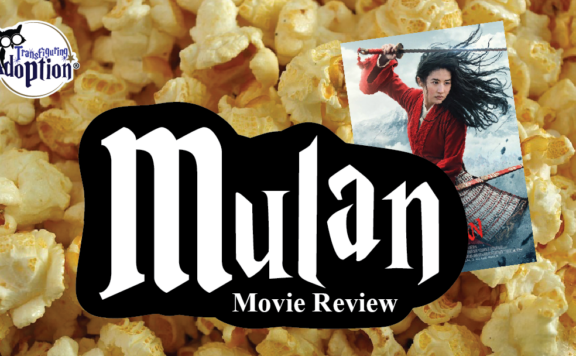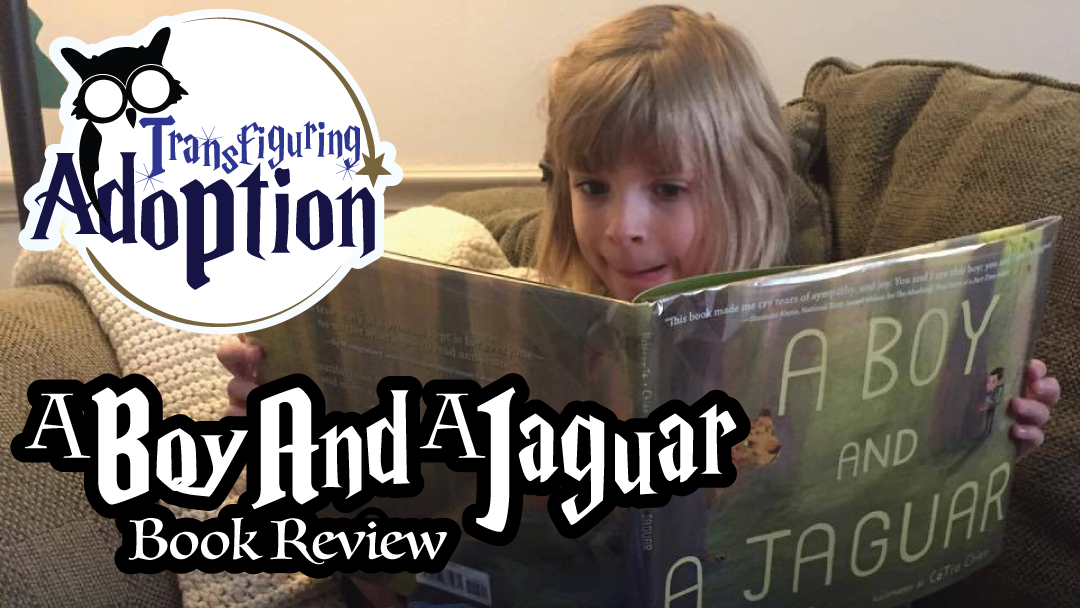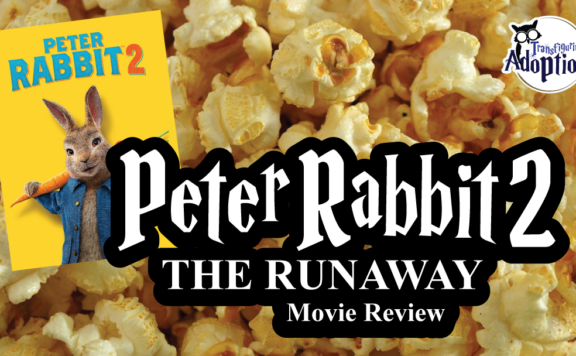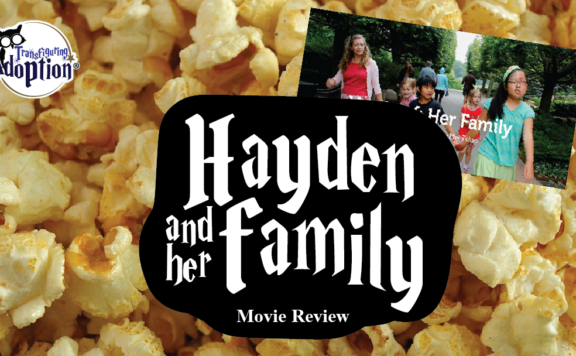From the Cover of Captain Marvel by Walt Disney Pictures & Marvel Studios:
“Set in the 1990s, Marvel Studios’ “Captain Marvel” is an all-new adventure from a previously unseen period in the history of the Marvel Cinematic Universe that follows the journey of Carol Danvers as she becomes one of the universe’s most powerful heroes. While a galactic war between two alien races reaches Earth, Danvers finds herself and a small cadre of allies at the center of the maelstrom.”
Movie Info:
Grade:
Transfiguring Adoption awarded this book 4 Hoots out of 5 based on how useful it will be for a foster/adoptive family. [Learn more about our Hoot grading system here]
As with all of the movies created by Marvel Studios, this film was not created with foster or adoptive families as the key audience. It seems to target those in the general public who enjoy superhero movies – especially those placed in the Marvel world. The movie has been rated PG-13, and we would agree that this story will be best for teenagers on up through the adult years.
The overall movie follows Carol Danvers as she tries to discover her identity by learning about herself in the present and rediscovering her past. The special effects are stunning. Marvel Studios fans will enjoy seeing favorite characters from this universe as their younger selves. The film also scatters humor in and amongst the fast paced storyline.
Foster and adoptive parents are going to appreciate that this movie features a strong female character who is coping with discovering her identity and trying to figure out who she is able to trust.
** Spoilers Could Be Ahead **
How Is This Relevant To Adoption & Foster Care?
Carol Danvers (aka Vers) is the main character of this film, and the movie viewer will spend the bulk of the time experiencing her living in the present while trying to figure out her past and identity. Carol remembers only bits and pieces of her past. Thus, discovering her identity is both an abstract theme and literal concept in this movie.
This theme connects very much to children who are in foster care or adopted as they might be striving to learn more about their past or piece together how their past fits together with their present and future. On her journey to learn more about her past, master her talents/abilities, and complete her own picture of herself, Carol finds herself in the company of a variety of people. There seems to be a constant underlying tone of Carol attempting to assess who she can trust, who her “real family” is, and who she feels is taking advantage of her. This theme is made quite profound given that an alien race which plays a strong role in this movie, the Skrull, are shapeshifters who take the form of other people. Thus, there are many times that you, the viewer, will find yourself questioning a “trusted” ally in the film.
The struggle to trust people definitely connects with so many foster and adoptive children. A child in foster care may wonder why the “safe” adult took them away from their birth home or children may have been taken advantage of by close family friends. A foster or adoptive child may feel as though the “safe” adults in their life are hiding information from them. Captain Marvel will allow families to create an environment where they can discuss identity and trust all in one movie with, again, a strong female role who never quits or gives into failure.
Discussion Points:
- Identity – Who Can Tell Us Who We Are
Through much of the beginning of the movie, Carol Danvers is learning how to control her power and much about herself from an alien race called the Kree, which have essentially adopted her. The Kree and their governing being, the Supreme Intelligence, seemingly want what is best for Carol, but one can notice that they constantly want her to prove herself to them.
Later in the film Carol reconnects with her old friend, Maria. This relationship feels a bit different as Maria not only holds information about Carol’s past but Maria’s friendship offers pure acceptance and love of Carol for who she is.
It would be interesting for families to point out the difference to their children and begin a discussion about who the people are that can tell us about our identity in everyday life. - “Real Family”
“You didn’t get along with your parents, so Mom said we became your real family.” This is a very brief discussion in the movie which some viewers may even miss, but the mention of “real family” can lead to a discussion of what makes a family. - Controlling Emotions
From the very beginning of the movie, the main heroine, Carol, is being taught to control her emotions so that she can better control her special powers. While Carol’s mentor, Yon-Rogg, is training her to fight and control her emotions, it could portray having emotions as a negative aspect.
Foster and adoptive who have been through traumatic experiences are going to struggle with regulating their emotions. Especially with being able to communicate to other people how they are feeling and expressing what needs they need met in the moment. One child may become angered and punch holes in a wall to express their (possibly subconscious) anger and fear about not being with their birth parents. It’s not the anger that is bad but the expression of the anger that a parent would want to see changed.
This film gives the possibility of bringing up a conversation about emotions and how we express and regulate them. It also opens up a dialogue about whether emotions are good or bad. - The Importance Of Other Lives
Throughout this movie we learn that Carol Danvers was not the strongest or most coordinated person before receiving her powers. Her defining characteristics were her determination and will to help other people. In fact we learn that she volunteered to fly a plane during an extremely dangerous mission that impacted her whole life because she understood that lives needed to be saved. What families can see from Carol is that other lives are important and precious and need to be held in high regard.
This can be a good discussion to have with children coming from situations where they may not have been cared for or their existence in foster care or adoption leaves them feeling like discarded property. Not only may children have a fragile self-esteem but their fight for survival may have them taking on an inward approach to life and not being able to practice empathy for others readily.
Parents might do well to discuss with their children why they believe their child is significant. Depending on the child, a family could have a discussion about actions/sacrifices the family has made to honor how important the child is. (Note: The emphasis of this dialogue should be put on how loved, worthy, and important the child is and should NOT make the child feel guilty that the family had to give up things in life.) This topic may also open up a good discussion which could lead to families choosing to help at a homeless shelter or make a meal for a sick neighbor. When we can help other people through a situation, it can sometimes help us to see that other people are going through tragedies also and give more clarity and perspective to our situation. - Think For Yourself
During the course of the movie, Carol Danvers’ knowledge about the world around her is challenged. The Kree, the alien race who have been training her and who are all she remembers, have taught her that another alien race, the Skrulls, are a dangerous threat to the universe. As the film progresses, Carol learns more facts about the Skrulls and discovers that she is not fighting on the side of “good” like she thought she had been. Carol takes the new facts and information she has discovered in the movie to make a decision to stand against rules and regulations that are so ingrained into her life.
Everyone must make choices throughout their day. For some foster and adoptive children who having a strong longing to be accepted by peers, it can be difficult to NOT go along with the status quo when they feel they will be rejected by other people.
The story allows families to talk with their children about thinking for themselves and choosing to do what is right when their peers might be taking a different course of action. It would be good for a family to pose hypothetical situations to their child about them and their peers to see how they would handle the situations. (i.e. Your friends want to skip math class and are begging you to come with them. What do you tell them?) It would also be good for families to talk about how different the story of the movie would have looked if Carol had not thought for herself and made the decisions she did.
Cautionary Points:
- Discussion of Past Loss
The movie mentions that the main character, Carol/Vers, “didn’t get along with” her parents, and this is the reason she spent so much time with her best friend’s family, who her “niece” says became her “real family.” This part of Carol’s past is really a brief part of the movie and is not dwelt upon for long. My children did not even pick up on this theme from Carol’s past. However, it is in the movie, and it is present. There is another moment during which Carol is speaking to the Supreme Intelligence, and she says, “You stole me from my family, my friends, my home!” This could be triggering to foster and adoptive children. Parents should be aware that this is in the movie. You may want to view this movie first to see if your child will be able to watch the movie successfully. - Super Hero Violence and Thrilling Scenes
Captain Marvel naturally includes fight scenes and suspenseful moments when the heroes are striving to stealthily get out of situations. The suspense and fight scenes are normal to superhero movies. The movie does NOT feature gory or detailed scenes of death. However, parents should be aware that this movie will get your child’s adrenaline pumping. This can trigger your child’s body to remember past moments when they were scared or abused when their adrenaline also experienced spikes. Consequently, your child may exhibit trauma-triggered behaviors.
Discussion Guide:
- Would you rather be a member of the Kree or the Skrull? Why?
Not all questions we ask about movies or other media have to be serious or have an underlying agenda. It’s fun to learn more about other people and learn about their thought processes or likes and dislikes. Simply spend some time with this question learning about your child and their preferences. - Which character from the movie would you most want to hire as your body guard: Nick Fury, Maria, or the Flerken? Why?
Again this is simply a fun question for your family to learn more about each other. - Carol Danvers didn’t remember anything about her past at the beginning of the movie. How do you think this made her feel? Why do you think that? How did she think or act differently after learning about her past?
Children from foster care or in an adoptive situation may not know everything about their life with their birth family. You might find that by talking about Carol’s fear and insecurities from an unknown past that your child might have fresh insight into how the character in the movie felt. Naturally, this insight about the character could give you a good indication about how your child feels about their past. - Carol’s mentor, Yon-Rogg, continually is trying to teach Carol to control her emotions? Why does he want her to do this? Are emotions bad? Why or why not?
So many times foster or adoptive children may hear adults’ disdain for the behaviors they exhibit when they are angry or sad. It can be easy for a child to believe that it is wrong to feel anger, fear, or anything besides happiness. As parents we really hope to see their “negative” behaviors cease and replaced with better forms of communication. These questions are meant to allow a family to discuss how emotions are not bad, but that they must be regulated and expressed in appropriate ways. - Carol had been taught for years that the Skrull were a deathly threat to the entire universe. She decides to fight against the Kree and the Supreme Intelligence when she learns she was told lies. Was it alright for her to do this? Why? Is it ever okay for children to disobey a teacher? a foster or adoptive parent? a caseworker? Discuss your answers.
It is important for everyone to be able to think for themselves when presented with choices of right or wrong. It can be good to talk with your children (and maybe a bit empowering) to discuss scenarios when they may have to speak against an adult. After all, there are more and more reports in the news of teachers physically taking advantage of students, and there have always been reports of foster parents genuinely abusing children in their care. This question allows you to talk with kids about when it is good to follow the adults and when they might need to seek out other adults for help. - Carol was trying to figure out who she was in the movie. Characters like Yon-Rogg, the Supreme Intelligence, and Maria along with her daughter all tried to tell Carol about who she was. Which characters helped Carol? Which characters should Carol have ignored?
We learn more about ourselves when we listen to what others have to say about us. However, we have to learn whose words we should trust – those that are close to us, know us and care for us. - Who are people that can tell you about yourself? Who are people that you should simply ignore when they talk about you?
Foster and adoptive children often times want to be accepted by peers. This could lead them to take too much stock in the word of acquaintances at school or other social settings. This question should spark a conversation where families explore how we trust the words of people who are closest to us and don’t whole heartedly take in the word of acquaintances. - Carol followed Mar-Vell on a dangerous mission because Mar-Vell led her to believe that lives were at stake. Carol herself did not have a positive relationship with her parents and had a rough time growing up. Why would Carol risk her life for other people?
- Are there people in your school or community that have a rough life? How do you know? Could your family do something to help them?
It can be easy for any of us to look inward to a point where we can only see our problems. If we spend too much time only with our own problems they can begin to seem gigantic. It can be good for your family to remember other people who are having a difficult life and possibly discuss how you might be of assistance. Not only can this put our own problems into perspective but get our mind off of our own issues for a bit. - How was Carol different at the beginning of the movie as opposed to the end of the movie? What caused this change? What can we learn from Captain Marvel?
